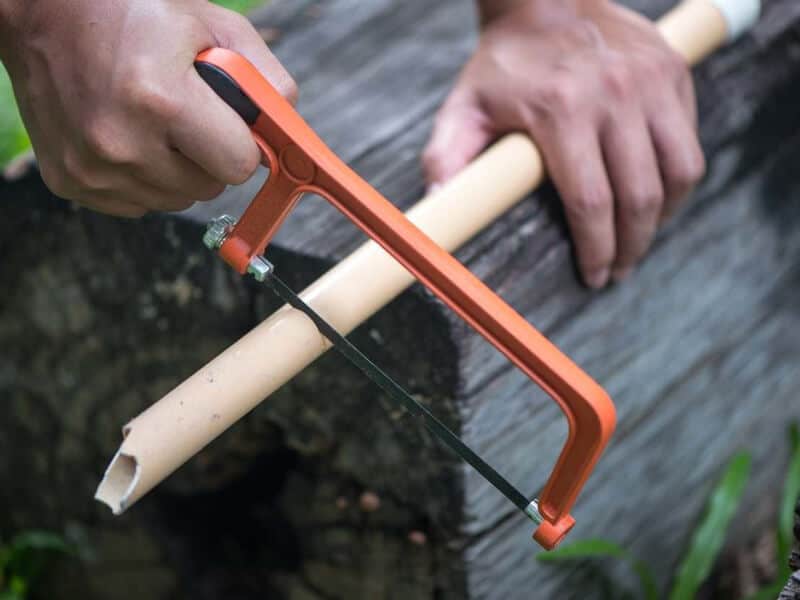You can cut hard plastic without a saw using different tools. If the plastic is thin, like acrylic or polycarbonate, you can make a line on it and then carefully snap it along that line. For thin plastics, you can also use a sharp utility knife, making many passes while cutting a little deeper each time. A Dremel tool with a special cutting wheel is good for various hard plastics.
However, if you have a hot knife or soldering iron, you can use that to melt through the plastic for a smoother cut. For thicker plastics, a hacksaw with a fine-toothed blade works well. Make sure to secure the plastic and cut it with slow, even strokes.
In some cases, you can also use a jigsaw or a router with a fine-toothed bit for precise cuts. Remember to stay safe by wearing protective gear, and make sure the plastic is held securely while cutting to get clean and straight cuts.
How to cut thinner plastics using a utility knife effectively?
By understanding and applying these methods and tips, you can cut hard plastics without a saw while achieving clean and precise results, whether you’re working with thinner or thicker plastic materials.
Cutting Thinner Plastics
Scoring and Snapping: Scoring is a technique used on thinner plastics like acrylic or polycarbonate. It involves making a shallow cut along the desired cutting line using a sharp utility knife or a glass cutter.
After scoring, gently bend the plastic along the scored line. This should cause the plastic to snap cleanly along the scored edge. Use a straight edge as a guide while scoring to ensure a straight and precise cut.
Using a Utility Knife: When cutting thinner plastics, a utility knife or craft knife with a fresh, sharp blade is a handy tool.
Make multiple passes with the utility knife along the cutting line, increasing the depth of each cut with each pass.
Furthermore, this method requires patience and steady hands to avoid chipping or cracking the plastic.
Dremel Rotary Tool with a Cutting Wheel: A Dremel rotary tool with a cutting wheel attachment is effective for a variety of hard plastics.
Secure the plastic on a stable surface and wear safety goggles for protection.
Make slow, steady passes with the Dremel tool along the marked cutting line. This tool allows for greater precision and control.
Hot Knife or Soldering Iron: A hot knife or soldering iron can be used to cut thinner plastics. These tools are heated to melt through the plastic.
The heat produced by the tool will melt the plastic as it cuts, resulting in a smoother and cleaner edge.
This method is ideal for plastics that may be prone to cracking or chipping when using other cutting tools.
Cutting Thicker Plastics
Hacksaw: A hacksaw with a fine-toothed blade is effective for cutting thicker plastics.
Secure the plastic in a vise or clamp, and make slow, even strokes to cut through the material. Ensure that the blade is sharp to prevent excessive plastic deformation.
Jigsaw: When dealing with thicker plastic sheets, a jigsaw with a fine-toothed blade can be used.
Clamp the plastic securely and make sure it’s well-supported to prevent vibrations during
cutting. Slow and steady cuts are crucial for accuracy.
Router: A router with a straight bit can be employed for precision cuts in thicker plastics.
Secure the plastic sheet and use the router to follow the intended cutting path. This method is useful when you need clean, straight edges.
Plastic Cutting Shears: Specialized plastic cutting shears are designed for various hard plastics such as PVC or ABS.
Moreover, they provide a straightforward way to make clean cuts without the need for excessive force or additional tools.
Tips for Making Clean Cuts

Gradual Depth Increase: When using tools like utility knives, Dremel tools, or hacksaws, start with shallow cuts and gradually increase the depth with each pass. This helps prevent chipping and cracking by reducing the stress on the plastic material.
Slow and Steady Cutting: Regardless of the method or tool used, it’s essential to maintain a slow and steady cutting pace. Rushing through the cutting process can result in jagged or uneven edges.
Secure Clamping: Always secure the plastic piece you’re cutting in a vise, clamp, or on a stable work surface.
Secure clamping minimizes vibrations and movement during cutting, contributing to cleaner and more precise cuts.
Final Words
In conclusion, cutting hard plastic without a saw is achievable through various methods and tools, depending on the plastic’s thickness and type. Whether you’re working with thinner plastics like acrylic or thicker materials, it’s crucial to prioritize safety by wearing protective gear, including goggles and gloves.
Additionally, always ensure the plastic is securely clamped or supported during the cutting process. Patience and a steady hand are vital for making clean and precise cuts. By following the appropriate methods and taking the necessary precautions, you can successfully cut hard plastic and achieve the results you need.
